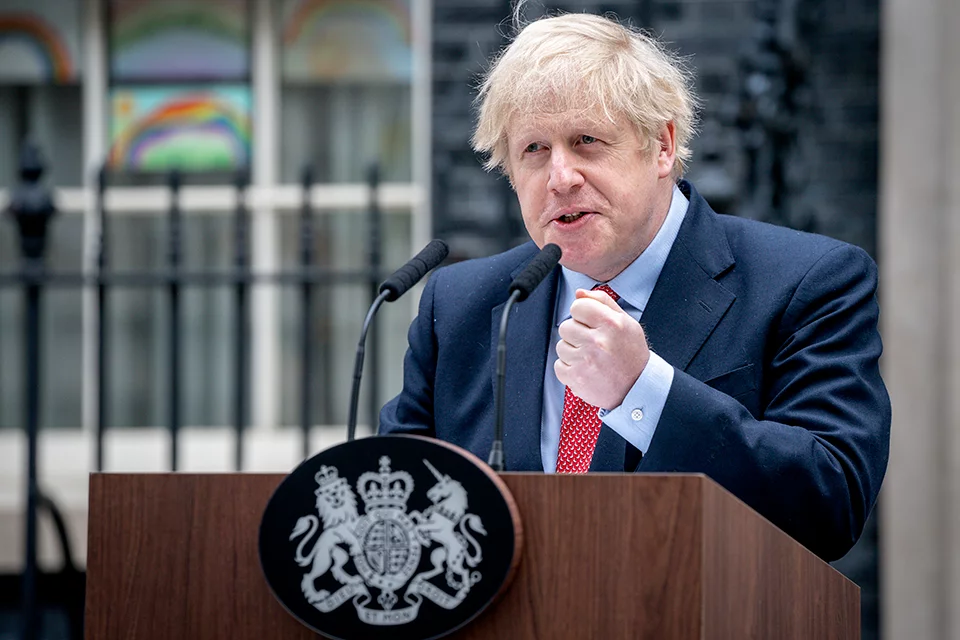
Top 10 Public Speakers (Worldwide!)
Contents
World leaders have the ability to inspire us, motivate us, shock us and even scare us.
There is tremendous power in great public speaking.
But some world leaders still haven’t ‘cracked the code’ and don’t hit the right mark when they’re addressing their nation.
If you want to learn how to give better presentations, view our powerpoint courses here!
The Top 10 Public Speakers In The World
We have analysed more than 100 hours of footage from press conferences, assemblies, political events and other public appearances over the last 12 months to rank the most eloquent world leaders based on their communication and public speaking skills.
After this analysis we are proud to present to you the Top 10 Public Speakers Worldwide.
1. Jacinda Ardern, Prime Minister of New Zealand
Jacinda Ardern employs an empathetic leadership style very effectively.
She challenges the common perception that emotional communication shows weakness, instead choosing to approach the public with a softer, emotionally mature touch which makes her very relatable.
She has a measured and authoritative sincerity about her – she is kind and compassionate, without shying away from tough issues which makes her a highly engaging and trustworthy public speaker.
2. Angela Merkel, Chancellor of Germany
Angela Merkel has received high praise for her handling of the coronavirus, in particular her crisis communication skills, and this is well deserved.
She is direct, calm and controlled. She projects confidence and experience at a time that this is in short supply, by keeping gestures to a minimum and her tone of voice even.
3. Narendra Modi, Prime Minister of India
The Indian Prime Minister is rightly hailed as an exceptional public speaker, for several reasons.
Mr Modi engages very well with his audience, using plenty of eye contact and positive body language to help convey his messages.
He also varies his tone of voice perfectly to keep his audience interested and engaged.
4. Justin Trudeau, Prime Minister of Canada
Mr Trudeau is a very clear speaker, which allows him to connect with people easily.
Occasionally cheeky and charming, he is always very well presented which gives him a good platform to work from.
He is easy to understand, his tone and pace are good and he exudes confidence.
5. Nicola Sturgeon, First Minister of Scotland
Nicola Sturgeon has received a lot of praise for her response to the coronavirus pandemic and it’s not hard to see why.
She is clear, calm and compassionate. She is not afraid to be tough or emotional, and has a great sense of humour.
There’s no sense of performance with Sturgeon – she is very real.
6. Mette Frederiksen, Prime Minister of Denmark
Much like Jacinda Ardern, the Prime Minister of Denmark is authentic and relatable, while also being clear and decisive.
She makes a clear and effective effort to connect with all of her people. For example, she held a press conference to answer questions from children.
7. Emmanuel Macron, President of France
Emmanuel Macron’s style of speaking is confident, engaging and polite although some people feel he can be a little formal.
He’s skilled at answering direct questions and is clearly very comfortable in front of large audiences.
He strikes a great balance between clearly communicating his message and showing care and respect.
8. Erna Solberg, Prime Minister of Norway
The Norwegian Prime Minister followed in the footsteps of Mette Frederikson, banning adult journalists from a press conference to address the fears of children.
She deviated from her usual scientific approach to empathise with young people, answer their questions and reassure them. She didn’t talk down to them but gave relatable answers.
9. Giuseppe Conte, Prime Minister of Italy
Despite a difficult year so far, the Italian Prime Minister has used his television addresses to reassure and inspire his people.
His use of personal pronouns conveys a sense of collectivity and national solidarity that is very engaging in uncertain times.
Conte’s speeches show him to be calm and direct, yet also empathetic about what the Italian people are going through.
10. Scott Morrison, Prime Minister of Australia
The Australian Prime Minister has greatly improved his reputation since the country’s devastating bushfires earlier this year.
This is thanks in large part to his communication skills during the coronavirus pandemic.
Mr Morrison has been open, emotional and even vulnerable during his addresses to the Australian people, demonstrating to voters that he shares in their pain.
By comparison, our experts identified two leaders whose presentation style needs some improvement:
Donald Trump, President of the United States of America
President Trump has always taken a ‘thinking out loud’ approach to public speaking. This is a characteristic that has not changed since he took office in 2017.
He reacts to questions before he has given himself time to think and so struggles to come up with thoughtful, appropriate answers. He will often jump to a new topic before concluding the previous one, causing his audience to lose interest or become frustrated.
His overuse of metaphors and analogies is confusing to many, and he occasionally slurs on words.
Unlike Boris Johnson, who has made noticeable improvements since becoming Prime Minister, Mr Trump has done little to address the flaws in his style of public speaking.
As these world leaders have demonstrated, the ability to effectively communicate is a critical factor in leadership roles. Some would argue that it is THE critical factor.
Some people are naturally more comfortable in front of an audience than others which makes public speaking easier. However, don’t forget that the majority of public speaking comes down to practising a learnable set of skills.
Our experts were also asked to identify their most effective communicator of the last decade from world leaders. The 44th President of the United States Barack Obama was the near-unanimous victor!
Boris Johnson, Prime Minister of the United Kingdom
Throughout his political career, Boris Johnson has had unique public speaking style.
Unlike many of his colleagues, the former Foreign Secretary and Mayor of London has a tendency to forgo pauses in favour of muttering or waffling, and his use of odd or obscure references often leaves people confused about his message.
However, in recent months the Prime Minister has made some real improvements to his public speaking style.
For example, he doesn’t stumble over his words or mumble as often as he used to.
During what has already been a significantly challenging year, the PM’s presentation is becoming increasing authoritative and in control.
Despite these improvements, the Conservative Party recently announced that it is looking to build upon the public interest in Boris Johnson’s daily briefings by hiring a spokesperson to communicate with the nation on behalf of the Prime Minister.
5 Tips For You To Improve Public Speaking
Now we know some great and some lackluster public speakers, let’s find out how we can improve.
For a quick tip – make a good PowerPoint presentation! Check out our PowerPoint statistics to see how useful they can be.
Here are our top 5 tips for people looking to improve their public speaking:
1. Practice with people you feel comfortable with
Stepping out in front of a large audience of strangers is daunting.
When you are practising start small and grow your confidence from there.
Start by giving a short presentation in front of your colleagues, friends or even family members.
Ask for honest feedback, incorporate that into your presentation and keep practising.
As time goes on your can build up to larger audiences of people that you don’t know so well.
2. Record yourself
Recording yourself giving a speech allows you to review your tone of voice and gestures, and refine your presentation.
Without a clear review, it is very difficult to spot issues (Eg nervous tics or rushing etc) so that you can then work on improving them.
By looking reviewing your performance, you can spot any problems and identify areas for improvement.
3. Make eye contact with your audience
Remember that your key task is to engage your audience and communicate your message clearly.
This means you need to get your audience engaged with what you are saying.
If you make eye contact with a variety of individuals in your audience for a few seconds at a time it will allow you to create a deeper connection with those individuals and also allow you to relax a bit.
4. Model experienced speakers
A great way to improve is to identify one or two public speakers that you relate to and think are outstanding and to study how they do it.
Spend time studying their past speeches.
Pay attention to their tone of voice, how they move around the stage and how they use body language to emphasise their points.
Once you understand how they do it take those ideas and practice incorporating them into your speeches.
5. Speak slowly
When you’re nervous, your breathing and heartbeat speeds up. In turn this makes most people speak more quickly.
To communicate clearly you can’t rush so before you go on stage to breathe deeply and relax.
Remind yourself of how well prepared you are and then go out and enjoy it!
For more, check out our 10 tips for delivering presentations here!




